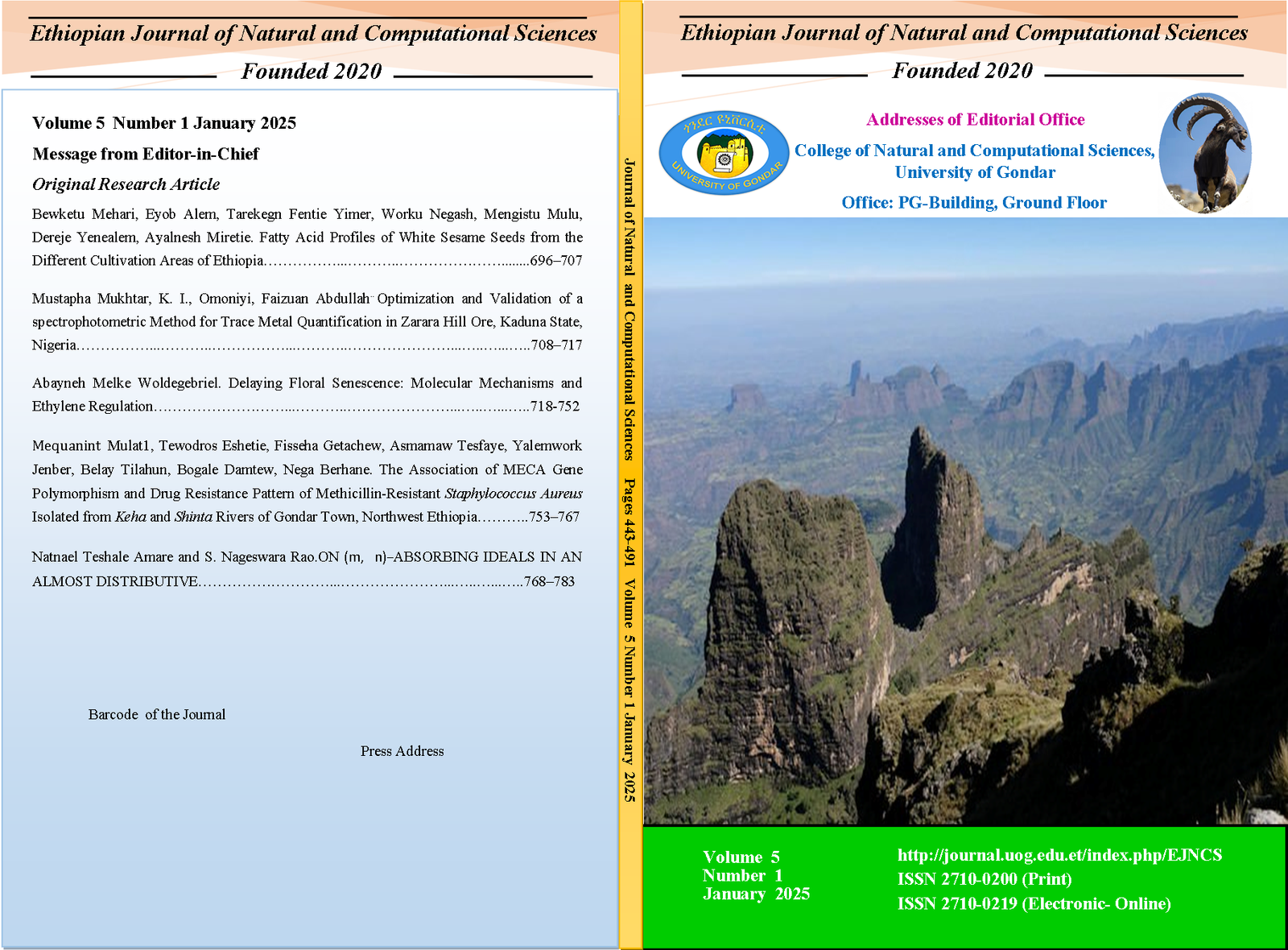Optimization and Validation of a spectrophotometric Method for Trace Metal Quantification in Zarara Hill Ore, Kaduna State, Nigeria.
Keywords:
Polymetallic sulphide ore, Leaching, Optimization and Response surface MethodologyAbstract
This study is mainly concerned with applying an effective statistical tool to optimize the recovery of metal, namely Fe, Cu, Pb, and Zn present in polymetallic sulphide ore of Zarara Hill, using different concentrations of Hydrochloric acid. Another target was to optimize a multi-response recovery process by minimizing time, energy, and acid consumption during the leaching. Effective parameters and their levels, including acid molarity (0.5 – 9M), leaching time (5 – 120 min), temperature (28 – 80℃), and stirring speed (100 - 720 rpm), were optimized. A well-established statistical approach, response surface methodology (RSM), was employed to quantify and interpret the effects precisely. The smaller ‘P’ value for both Fe (0.0001), Cu (0.0003), Pb (0.0004), and Zn (0.0002) shows more significant coefficients. The R-squared values are 0.7434 (Fe), 0.9841 (Cu), 0.9945 (Pb), and 0.9858 (Zn), and the adjusted R-squared values are 0.6792 (Fe), 0.9471 (Cu), 0.9817 (Pb), and 0.9527 (Zn). It can be observed that all the R-squared values are close to one, and each of the adjusted R-squared values is close to its corresponding R-squared value. These confirm the adequacy of the developed model. Finally, an Atomic Absorption Spectrophotometry (AAS) for the quantification of Fe, Cu, Pb, and Zn was developed and validated.
Downloads
Published
How to Cite
Issue
Section
License
Copyright (c) 2025 Authors

This work is licensed under a Creative Commons Attribution-NonCommercial 4.0 International License.

